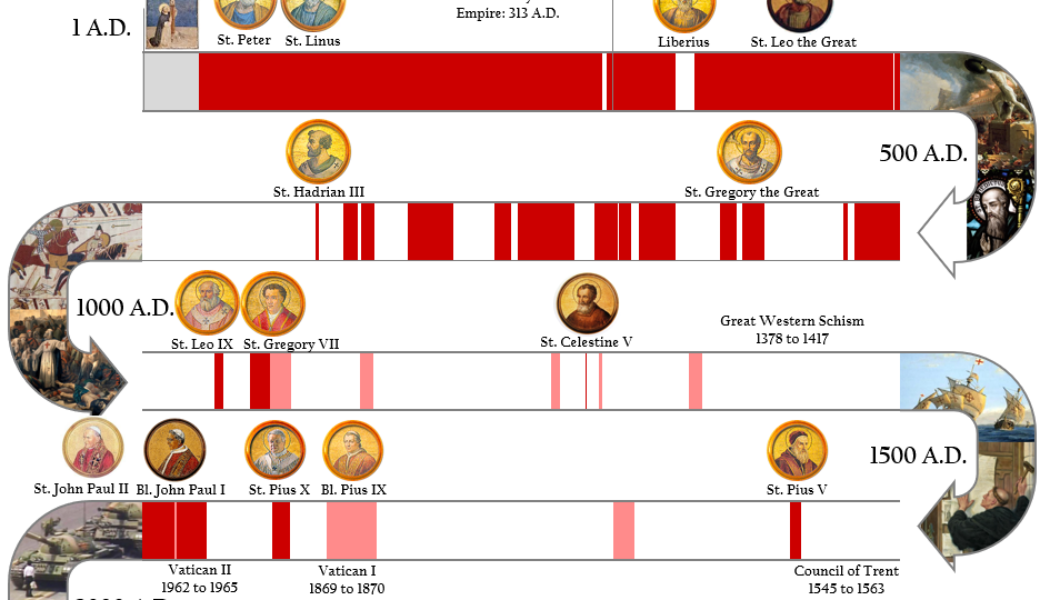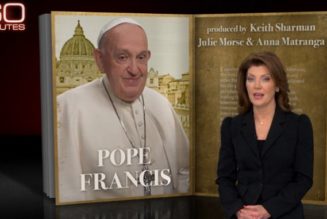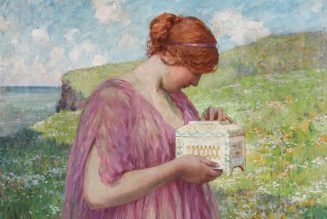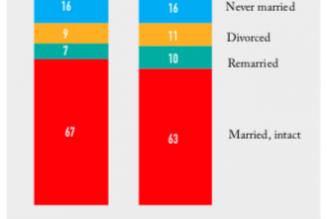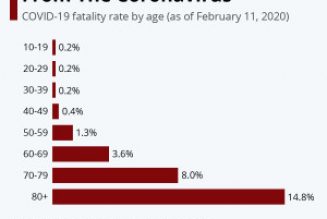Happy Friday friends,
Yesterday brought the deeply sad news that Elizabeth II has gone to her reward.
To the extent that it is ever wise to speculate on the disposition of a stranger’s soul, I feel as confident as I can that Herself can hope in the loving mercy of Christ. The sincerity of her Christian faith was all too evident in her words and works, and ever more explicitly so in her later years.
The British sovereign, who is also head of the Church of England, is the last monarch to be crowned liturgically. Elizabeth’s coronation was famously the first to be broadcast on television, but, at her own insistence, she was screened from the assembly and the cameras for her anointing, a moment she believed to be of deeply solemn and spiritual importance.
The queen considered her role to be, in the fullest sense, a vocation. She vowed before God to serve her people all her life and, as her people’s mourning attests, her service was deeply felt.
I have some thoughts on Elizabeth, and the nature of the monarchy, but we’ll come to them in a moment.
And apart from them, you’re not reading The Pillar for wall-to-wall repetition of the condolences, testaments, and prayers which have been pouring out from everywhere and in every publication which doesn’t have the words “New York” in their name.
But we do want to bring you interesting and related coverage.
To that end, if you’re minded to pray for the repose of the soul of Elizabeth II, you might consider invoking the intercession of her predecessor, St. Edward the Confessor. The Queen inherited a throne which is usually said to have stood for 1,000 years, and at the front of that line is Edward, whose reign ended with his death in 1066, triggering the Norman invasion and all that followed.
—
The News
On the subject of departed and much beloved leaders, we had the beatification of Pope John Paul I earlier this week. Following the canonizations of John XXIII, Paul VI, and John Paul II, every deceased former pope since the opening of Vatican Council II has now been raised to the altars — we seem to have been living through a remarkable run of saintly pontificates.
But is this such an historical aberration? The Church is 2,000 years old, after all.
And, as you’d expect, he’s made some graphics that are, frankly, worth the read all on their own.
Check the whole thing out right here.
—
While the United Kingdom ends this week with a new head of state, it began the week with a new head of government for the country. In one of her last acts as sovereign, Elizabeth invited Mary Elizabeth “Lizz” Truss to form a government and become the new Prime Minister.
Coffey has made it clear that rolling back legal abortion access is on neither the government nor Parliamentary agenda, and indeed it is not, sadly. But that has not stopped cries of protest from the abortion lobby, which is politically and culturally entrenched in the UK to a degree that makes Planned Parenthood look like a feisty political outsider.
You can read all about it here.
—
‘Nein’ seems to be the hardest word
A minority of German bishops blocked on Thursday a controversial synodal document on sexual ethics, triggering criticism from their episcopal brothers, and just plain “triggering” the synod’s lay participants.
The failed text argued that “it will not be possible to reorient pastoral care without re-defining the emphasis of the Church’s sexual teaching to a significant degree,” and that it is “urgently necessary to overcome some of the restrictions in questions of sexuality, for reasons of sexual science as well as theology.”
There then followed protests, shouting, and some standing-in-circles-holding-hands, as lay assembly members expressed their anger.
“So much for the separation of powers” lamented one visibly aggrieved layperson, unironically summing up what has been the principal problem (from Rome’s perspective) with the whole German process from the beginning: It does not have any authority to treat deliberatively the issues it wants to address.
A well-informed friend in Rome telephoned me shortly after the vote was announced, as the protests were getting underway in the synodal hall, to observe that it has often been the way with the German bishops that they stoke expectations of radical reform among their flock while waiting for someone, usually Rome, to say the inevitable “no,” pour cold water on the whole movement, and start the cycle all over again.
As an historical observation, this might be astute. But in this case I think the synodal way might be too far along to be stopped.
Some have hailed yesterday’s result as evidence that the German bishops are, in fact, concerned about creating an unbreachable rupture with Rome, and are willing to step back from the edge.
But I suspect yesterday’s minority “nein” will get the same hearing in parishes and dioceses as Rome’s various “no”s to inter-Communion with Protestants, the blessing of same-sex unions in churches, and to constituting the synodal way as a parliament in the first place.
Several bishops joined the protests yesterday, including Cardinal Reinhard Marx of Munich and Bishop Georg Bätzing, the past and current presidents of the bishops’ conference, to denounce the result. Considerable anger has been directed at the bishops who voted against the proposal in a secret ballot. An effort is on to flush them out and make them “justify” their adherence to the Church’s teaching authority and knuckle under to the will of the majority.
However dedicated to holding their ground might be the 21 “dissenting” German bishops, I suspect their defense will prove to be an ecclesiastical Maginot Line, simply marched around as the assembly agenda advances.
Both Marx and Bätzing have vowed to take the rejected document to Rome for their ad limina visit next year, and to the final session of the global synod on synodality next October, where it will likely feature prominently in discussions, regardless of the level of support it receives from the other bishops.
We’ll be covering those votes as well as they happen — if they happen. A lot is still undecided about the coming agenda in Frankfurt.
—
In case you missed it, Australia’s bishops issued Tuesday a guide on gender and identity for Catholic schools.
You might think this discussion has been playing on repeat for a while now, and presume that documents like these are ten a penny, but you’d be wrong, even though the Congregation, sorry, Dicastery for Education has encouraged both.
As we’ve reported before, both the USCCB and the Dicastery for the Doctrine of the Faith had drafted texts on the same subject, but stashed them in a drawer instead of publishing them. The Australian bishops’ document is, therefore, somewhat unique just by the fact that it’s made it to publication. More to the point, it’s been hailed by some observers as a clearly thoughtful text, which takes pains to engage a volatile issue with as much pastoral sensitivity as possible.
—
Pope Francis has been meeting this week with his nuncios from around the world for a four-day conference.
Yesterday, the pope kicked off a private question-and-answer session with his senior diplomats. He no doubt had a lot to say, and they might have had a few questions for him, too.
Matters are made more complicated by the pope’s own conflicting signals to them.
Francis has been clear he wants ambassadors in the mold of St. Charles de Foucauld, the soldier and adventurer turned hermit missionary-martyr. But his own interventions in Ukraine, Nicaragua, and China have appeared repeatedly to favor the pragmatic over the prophetic. So what are his ambassadors supposed to do?
You can read my whole analysis here.
—
When Brad and Jesi were told that their daughter might have the chromosomal condition trisomy-18, the doctors suggested an abortion. The couple said no. They knew they wanted to choose life for their daughter, whom they named Faith.
Twelve years later, the family have had to keep insisting on the dignity and basic right to medical care of their daughter, and other children with similar conditions, in a medical field that often wants to deny them both.
They talked with Charlie Camosy this week about their life, their advocacy, and their work with doctors who have been taught children like their daughter are “a waste of scarce medical resources.”
—
Who Elizabeth was
Our house has, for 24 hours now, been in more-or-less formal mourning for the late Queen Elizabeth II. Don’t get me wrong, neither my wife nor I knew her.
There are no tears, or grief of the sort that would follow the death of a loved one, and to pretend that the queen was “like a member of our family” would be the kind of sentimental hyperbole I suspect she would have found off-putting.
But there is a truth to the observation that her death is the end of a real “Elizabethan age,” at least for the people she served as head of state. It is hard to convey to Americans, whose primary window into the dynamics of the monarchy is often the National Enquirer, what exactly Queen Elizabeth meant, and what she represented for her people.
She was a living point of continuity in national life, for sure. As a child and young woman, she lived and served through World War II, in much the same way as everyone else of her generation. In the succeeding decades, as she found her feet as sovereign, she grew into a fixed point, a kind of cultural pole star, around which the country and society could turn — a constant amid change.
In later decades, she served as a living vessel of the wisdom of memory, institutional, cultural, and personal. For myself, it feels as though the last figure of stability and steady voice of sanity has departed the public stage.
But these are all ways in which Elizabeth made her role her own, and lived her vocation as herself. They were the fruits of the lifetime of service she offered to the UK and fourteen other countries. You don’t have to have lived in Britain to understand or even admire this. Understanding the monarchy as an institution, and the place it has in the national psyche is harder to grasp from without, especially for Americans, I think.
America’s foundational self-conception is individualistic, not collective, and this colors our relationship with national symbols, and especially public figures. It is a point of principle as much as pride that anyone can be president.
Our relationship to leadership is a strange kind of blend of hypothetical self-projection and meritocracy — “I could be/could have been president, but that person is because he worked for it/beat the other guy.” The same is true, to a degree, with status and wealth: the self-made man (or woman) is praiseworthy, the inheritor of massive capital, financial or political, is inferior, suspect even.
This often extends, by the way, to the way some American Catholics conceive of vocations — in theory, every path and option is (or should be) open to everyone; which to pursue is a matter of individual discernment, verging on personal choice. Taken to its logical conclusion, it is the mentality which underpins criticism of the Church’s teaching on the sacramental ordination of men alone as a question of individual justice, opportunity, and freedom, rather than a matter of divine disposition.
But the monarchy in Britain is something different. The crown, the sovereign, is meant to be a living embodiment and exemplar of the people’s collective self image. Ask the British man or woman in the street what they admired about Her Majesty, as cameramen from all over the world are now doing, and they will likely respond with words like duty, service, quiet strength, humility, and so on. Characteristics with which, by and large, the country collectively identifies and aspires to, but as a group, not an individual.
The philosopher Roger Scruton wrote an excellent explanation of this.
When Americans think of how they relate to, say, the president, it is a question of “him and me,” or “I-Thou” if you want to be all Martin Buber about it. Two individuals, distinct.
The relation of many, if not most Brits to Queen Elizabeth was not so much “me-to-her,” indeed Elizabeth’s scrupulous dedication to keeping her private views private was an essential part of how the modern monarchy works. None of us knew the real her, nor did we want to, really. She was a symbol, an embodiment, of something collective, related to not so much through a dynamic of I-It as I-We. The queen was the collective personification of her people, at least in their eyes.
It is for this reason that when columnists at several American media outlets publish mocking criticism of Queen Elizabeth and the monarchy on the day of her death, it isn’t simply dismissed in the UK as tone-deaf adolescent attention seeking, it’s taken personally. To insult the queen is to insult the people who see themselves in her.
Of course, for such a modern monarchy to work, it’s necessary that there be someone who does it, and is formed to do it. And while it might raise democratic hackles to say it, to want or to win the job would be in a sense disqualifying.
I’ve never met anyone who believes the royal family are a better class of person than anyone (let alone everyone) else, and it would be farcical to pretend so. What they are is a group set apart by common consent to perform a lifetime of (not unrewarded) service, which they might do well or badly or not at all — a prince can, as we have seen, dispense with the public service, move to California, and live comfortably on the proceeds of becoming a reality television spectacle.
For her part, Elizabeth is considered great by her country because she was willing, for her whole life, to disappear into her vocation, to be the collective memory and identity of her people. There was no “my truth” for the queen, only her service to ours.
There is a powerful example of humility in that which, apart from her faith in Christ, may be all I can say I knew of the “real” Elizabeth, but it is enough for me to mourn. Weird as that may seem to many of you.
See you next week,
And God save the King.
Ed. Condon
Editor
The Pillar

Sign in or become a The Pillar member to join the conversation.
Just enter your email below to get a log in link.
Join Our Telegram Group : Salvation & Prosperity
